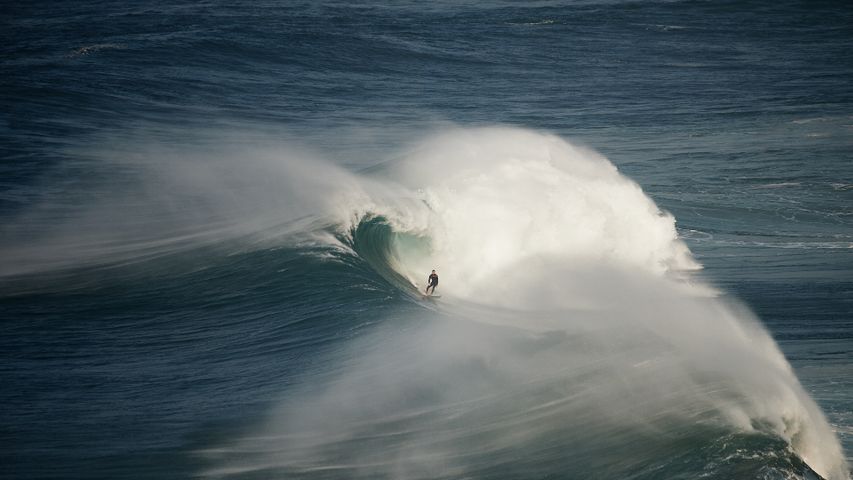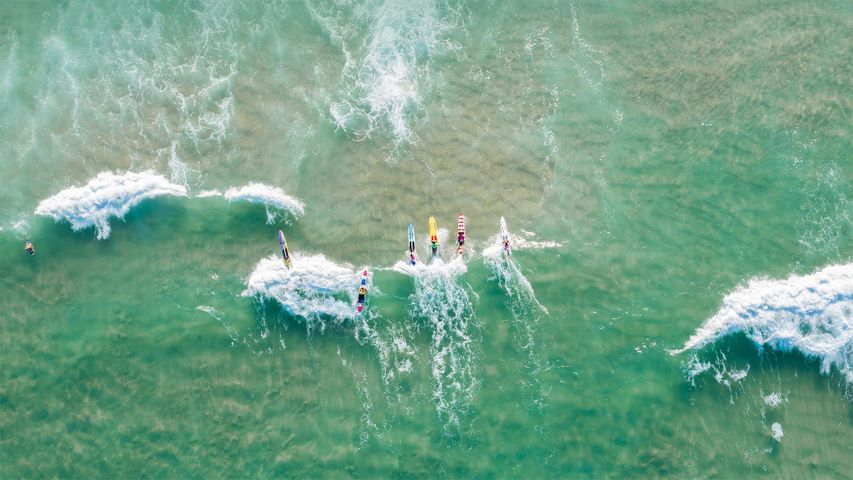Meoto Iwa (Wedded Rocks) off the coast of Ise, Mie Prefecture, Honshu, Japan
© Marco Gaiotti/plainpictur
Sacred stones. Wedded Rocks, Japan
Just off the shore of the city of Ise, in the southern-central region of Japan’s main island, Honshu, two rocks represent a sacred union between a divine couple. Known collectively as Meoto Iwa (Wedded Rocks), these sea stacks represent Izanagi and Izanami, the married brother-and-sister deities who created the islands of Japan and its gods in Japanese mythology. The large rock on the left is said to be the husband, Izanagi–at its peak is a small torii, a symbolic gateway marking the entrance to a Shinto shrine. The smaller rock represents his wife, Izanami.
The smitten sea stacks are joined together in matrimony by a thick rope braided of rice straw called ‘shimenawa,’ which is used as a symbol of purity and protection in the Shinto religion. The sacred rope is replaced in a special ceremony, held three times each year during the months of May, September, and December. The best time to see the rocks is at dawn during summer or twilight in winter, when the sun and moon, respectively, rise between them. If the weather is clear and the gods are on your side, you might even catch a glimpse of Mount Fuji in the distance. But we think it's just as beguiling with heavy snowflakes gently falling all around.
Related Images
Bing Today Images






 Cala Luna beach, Sardinia, Italy
Cala Luna beach, Sardinia, Italy
 Mona Vale rockpool, Sydney, Australia
Mona Vale rockpool, Sydney, Australia
 Surfer riding a wave in Nazaré, Portugal
Surfer riding a wave in Nazaré, Portugal
 Storseisundet Bridge, Atlantic Ocean Road, Norway
Storseisundet Bridge, Atlantic Ocean Road, Norway
 Blacktip reef sharks, Maldives
Blacktip reef sharks, Maldives
 People surfing at Burleigh Heads, Gold Coast, Australia
People surfing at Burleigh Heads, Gold Coast, Australia
 Polar bear in waters off Svalbard, Norway
Polar bear in waters off Svalbard, Norway
 Oyster farm offshore from Notojima Island, Ishikawa Prefecture, Japan
Oyster farm offshore from Notojima Island, Ishikawa Prefecture, Japan
